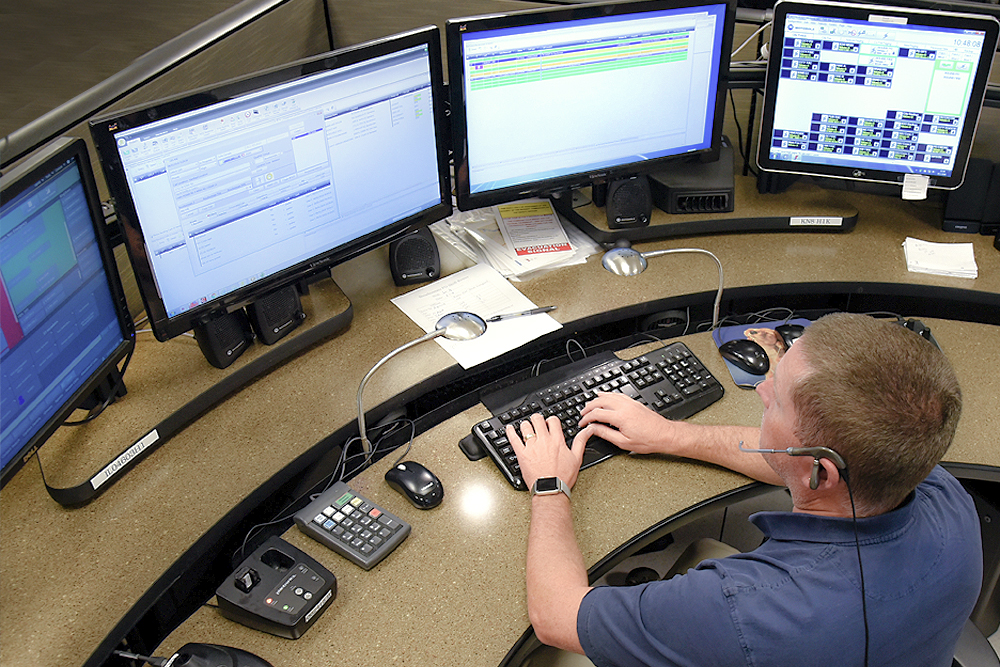

- #Computer aided dispatch for microsoft access download free update#
- #Computer aided dispatch for microsoft access download free driver#
- #Computer aided dispatch for microsoft access download free Bluetooth#
This data can be used in realtime by transportation management centers (TMCs) to understand travel patterns, deviations from normal travel patterns, and during and after emergencies (like hurricanes and snow storms) as a surrogate measure of power failures and when businesses are open or closed. Point-of-sale vendors are starting to sell data related to where credit card transactions are taking place, the commodities purchased, by whom, and more. The resulting data is a point-to-point travel time between the two sensors that is often more accurate than traditional sensors and/or probe data.Ĭredit Card Transactions (from Point-of-Sale Vendors)
#Computer aided dispatch for microsoft access download free Bluetooth#
Installation of Wi-Fi and Bluetooth equipment at intersections or other decision points helps to better understand travel times and travel patterns on key corridors and arterials. Planners and policy makers use this data to understand infrastructure degradation, life cycle, and maintenance needs over time. High-Resolution Map Data and Other Asset Management SystemsĬompanies are now touting their high-resolution mapping data, which includes extremely detailed information (down to the centimeter accuracy) about where curbs are located, how high the curbs are, where road markings are located, and where and what is on a road sign.

Speed and travel time data from vehicles using navigation systems aids in the study of congestion trends, identification of problem locations, before and after evaluations, and project prioritization.
#Computer aided dispatch for microsoft access download free update#
When used in a planning environment, this data can more quickly update maps-often faster than commercial providers that typically update their maps quarterly with significant lag between when new roads are completed and when added to the system. When archived, this data can augment or completely replace traditional trip and O-D studies used by planners and modelers.ĭirectional, navigable mapping data created and edited by the public can be used to supplement (and sometimes improve upon) State centerline files. Operators can use the data to conduct after-action reviews for significant events to understand the impacts of events and road closures.

For any trip, data is being continually relayed back to the operations center or advanced traffic management system platform that tells operators which routes travelers are taking to get to their destinations, how fast they are moving, and if that route is normal or abnormal for that type of vehicle, time of day, etc. Trajectory data is similar to origin-destination (O-D) data, except that it also provides waypoints (breadcrumb trails).
#Computer aided dispatch for microsoft access download free driver#
Planners, policymakers, and engineers can mine this data (with other datasets) to understand driver behavior and to identify roadway safety improvements. While the percentage of vehicles equipped to broadcast BSM is currently very low, this data has the ability to eventually be highly useful at signalized intersections, work zones, and other locations where split-second decisions have safety implications. Some modern roadside equipment can now collect basic safety messages (BSM) sent from equipped vehicles. Agencies are beginning to leverage this data as a supplemental event/incident data sourced. Preliminary studies have shown Waze crowdsourced data to be comparable in speed and quality to public safety computer-aided dispatch data, and is particularly useful in rural areas where intelligent transportation system coverage is usually limited. DataĬrowdsourced 1 Incident and Congestion DataĬrowdsourced incident and event data can help agencies quickly identify all sorts of safety and congestion issues on the roadway without having to invest in additional sensors, cameras, or other costly data from third parties.


 0 kommentar(er)
0 kommentar(er)
